If you’re wondering what it’s like to homeschool, this might be your year to try. With everything up in the air thanks to that nasty little virus and racial issues actively offering instability. It’s the perfect time to think about your other options and homeschooling is a great one.
Even if you’re just curious it’s worth checking out. This is what I’ve learned from homeschooling Aiden for preschool, pre-k, and kindergarten. Coming from a mom who was homeschooled all the way through.
The key to this is learning. Not so much like they teach at school. The answers don’t need to be given so much as discovered. Develop your child’s God-given curiosity and they will soar being homeschooled.
Disclaimer: There are affiliate links in this post. I will receive compensation if you make a purchase at no additional cost to you. Our full policy is available here.
Homeschooling Material Can Be Simple
Reading, writing, and math are the basics. The simpler your curriculum the further you will get. Focus on the basics. The more practice your child gets the more they will be able to master what you’re teaching.
One thing to know about homeschooling kids is they are curious. Once they know how to read they can teach themselves a lot. It’s part of learning something new and not just being handed the answers. A lot of the stuff I was interested in growing up got learned through reading or research on my own especially in those “harder” years in high school.
ENCOURAGE EARLY READING WITH THESE 5 TYPES OF BOOKS
Check out my homeschooling section here.
Keep Active with Homeschooling
Your active kid needs to be active. They don’t always sit still. Head over to the park or the back yard and play before the lesson. Spend at least an hour actively playing. Get some ideas for play time here.
Get some reading done while your child is playing. You’d be surprised how much they’re listening even when they’re busy playing. Keep your lessons simple and incorporate fun if you can.

Activities by the season:
- Spring Activities
- Summer Activities
- Fall Activities
- Winter Activities
Keep Track of What You’ve Done
Portfolios are required in Pennsylvania. It’s a logbook of all the schooling you’ve done. It can be all paper, photos, or a combination of both. The important part is to show progress from the beginning of the year to the end.
Some of the work we do doesn’t end up on paper. Since Aiden loves active learning, chalk and the driveway are often how he learns. To document, I take pictures of what he has done and make a note of it in his log.
We have to have something to show to the evaluator and the school district. It can be full of everything you’ve done or just a few samples of the beginning of the year and some others from the end of the year.
Routines Are Better Than Schedules
We try to cover all subjects every week. Flexibility makes that possible and a lot less frustrating. When something doesn’t work or isn’t interesting, switching gears can make learning more engaging. Letting Aiden pick what he wants to learn about helps too.
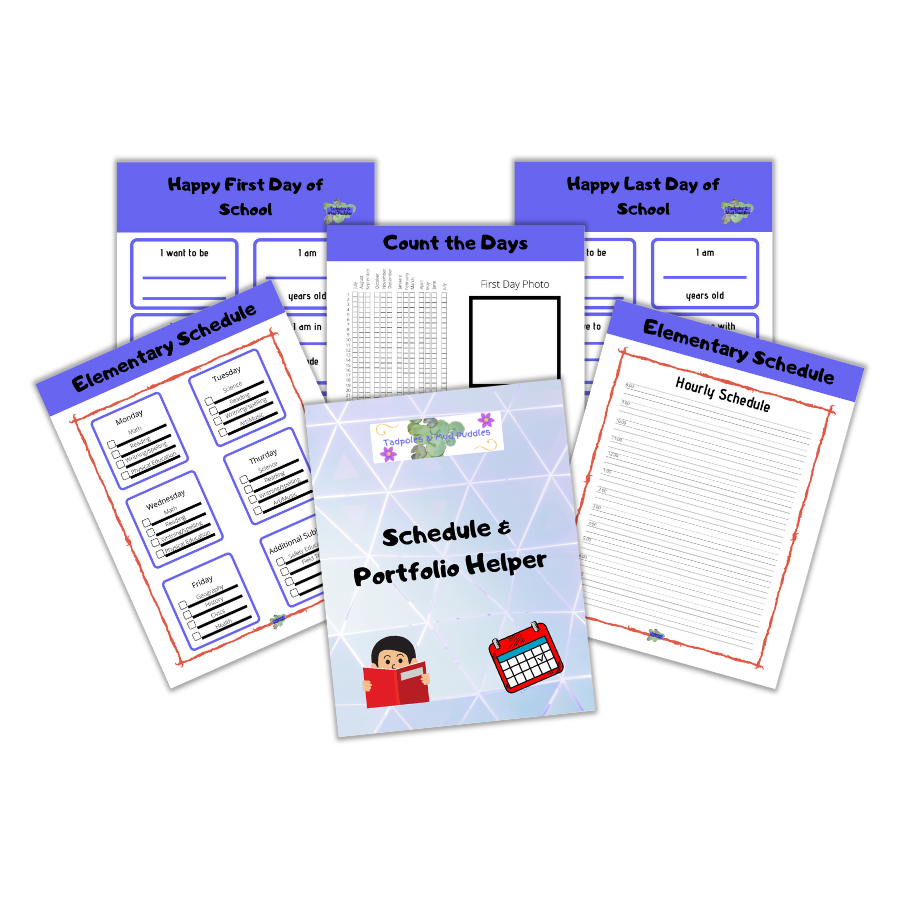
Reading Can be from Any Book
Yes, easy readers are necessary but if you want a reader you have to read other things. That doesn’t mean sit still and read 20 chapters in a day (unless your child wants too 🙂 ). It means pick a classic and work on it. Then pick another one. It might be a chapter at a time or a page. It will increase your child’s vocabulary and listening skills.
Pick something that’s a good story. Like Little House on the Prairie or Chester Cricket’s Pigeon Ride.
Related Post: Encourage Early Reading with these 5 Types of Books
Homeschooling with Workbooks Vs. Textbooks
I like workbooks. I often use free stuff I find on Pinterest. There’s also a bundle I purchase every year from Homeschooling Bundle. And I’ve made my own.
Textbooks are nice but limit what you’re teaching. Workbooks are meant to be written in and maybe even colored. They are less work for you because they don’t require copying either by hand or machine if you use the assignments. Not to mention workbooks are often cheaper.
So aside from Teach Your Child to Read in 100 Easy Lessons we’re not using them.
Here are some free worksheets on Pinterest.
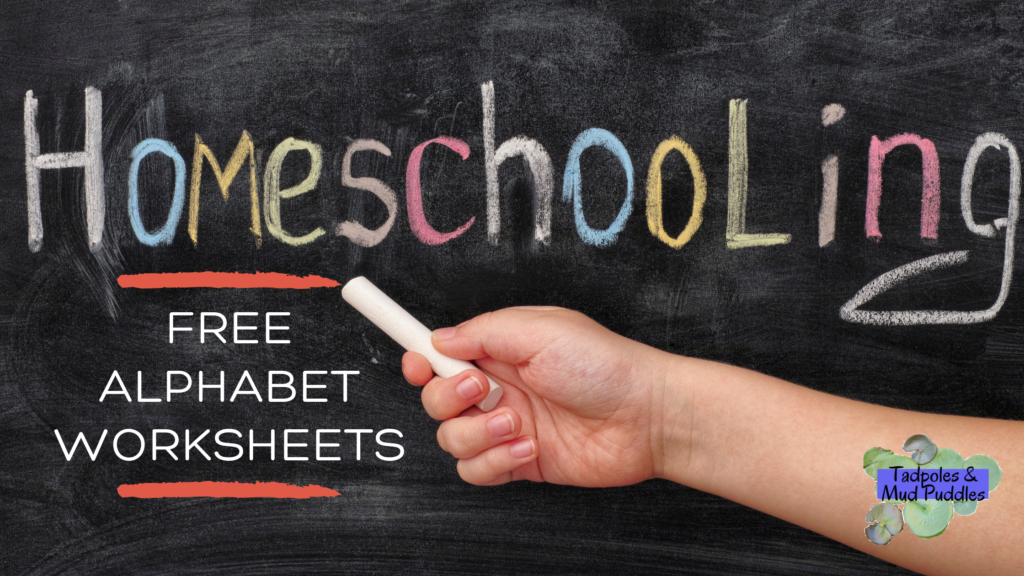
Be Compliant with Your State’s or Country’s Requirements
Make sure you are compliant with all your state’s requirements. For Pennsylvania, we need a few things to officially homeschool.
- Affidavit (stating that you plan to homeschool and swearing that the home is safe).
- Vaccination records (unless there’s a religious exemption).
- Objectives (plan/goals for the year).
I highly recommend reaching out to the school district you are in. They can provide the forms to you and make it easier to get started.
Remember to read the law for your state and know that you are informing the school district you are homeschooling not asking for permission.
How to Create Your Routine from Your Objectives
Our objectives for this year are:
Objectives 2020-2021
Aiden J. Thornes
First Grade
English
- Spelling: 3 and 4 letter words.
- Writing: short stories and 3 and 4 letter words.
- Reading: short stories and sight words.
Arithmetic
- Understanding and ordering of numbers 1-1000.
- Adding, subtracting, multiplying, and dividing of single and double digits numbers.
- Understanding of time, dates, and money.
Science
- Earth science (bugs, dirt, and rocks).
Geography
- Knowledge of all the continents and oceans.
History of the United States and Pennsylvania
- Knowledge of big events in US and PA history: wars, civil rights, and government.
Civics
- Understanding of the three branches of government.
- Current president and governor.
Safety Education
- Stranger danger.
- Firehouse visit, fire safety.
- Water safety.
Health
- Basic of organs, bones, and tissue.
Physical education
- Swimming, nature walks, soccer, Karate.
Music
- Piano lessons.
Art
- Painting, drawing, & arts and crafts.
I wanted to keep it general enough to let Aiden pick what he is interested in and follow all the requirements for our state.
To use these objectives as a routine we are focusing on reading and math everyday. Picking one or two of the other subjects off of interest. Doing one active play learning active and one physical education activity.
I can’t stress enough that active play and physical activity is a must. There’s no focus when there’s pent up energy.
Related post: Active Kid, Active Life
How to Have Measurable Goals
Measurable goals help build progress. Take your objectives and break them down into small bite sized parts.
If you’re learning to read you don’t start with the chapter books. You start with letter sounds, then combine letter sounds, then full words, final sentences. If you break your goals into small pieces then each sound is an achievement instead of a struggle. Which strengthens the desire to learn in the first place.
It doesn’t hurt to celebrate the little things. Special rewards go a long way in motivation especially with difficult or least favorite subjects.
Teaching the Golden Rule
Regardless of your beliefs, teaching the golden rule is something we should all do. Treating everyone with the same respect and dignity you want should be deeply ingrained in our children. You should teach kindness and care for all human beginnings regardless of circumstance.
Free Curriculum Resources
Here are some great curriculum resources you can download and use free of charge.
Free printables:
Free homeschool curriculum for elementary and middle school grades
Music resources:
Stem resources:
Kindergarten Science Curriculum
Top 25 Science Experiments For Kindergarten And Kids
Civics resources:
History resources:
Safety resources:
Art resources:
16 Arts and Crafts Projects for Kindergarten
3 fun easy kindergarten art lessons
Reading resources:
Teach Heart: reading, writing, art, self-care, and family time
Writing resources:
free and free to try writing apps
25 Ways to get Kids to Write | Scholastic
+50 Awesome Reading and Writing Websites to Keep Kids Learning at Home
The Ultimate Guide to Homeschooling with an Active Kids
Homeschooling doesn’t have to be complicated. Keep it fun. Remember to keep it legal and go for your goals. Your child is naturally curious. So all you need to do is looking for the things they want to learn and build off of that.
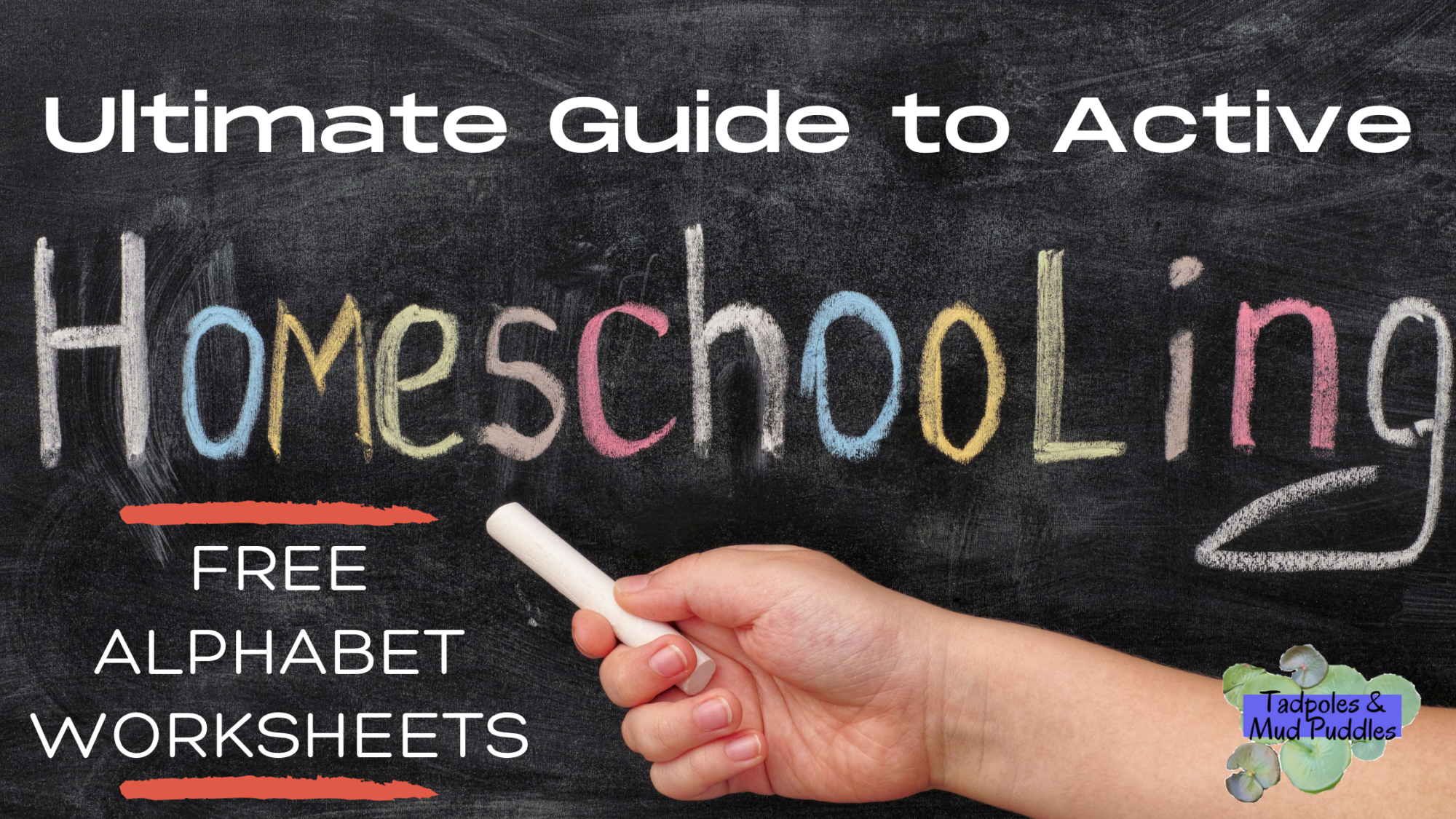
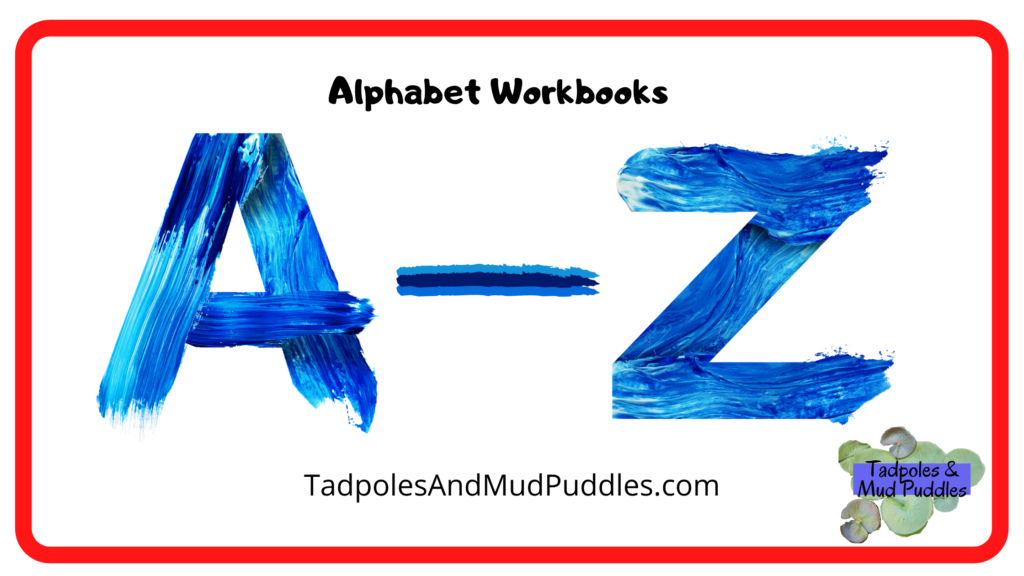
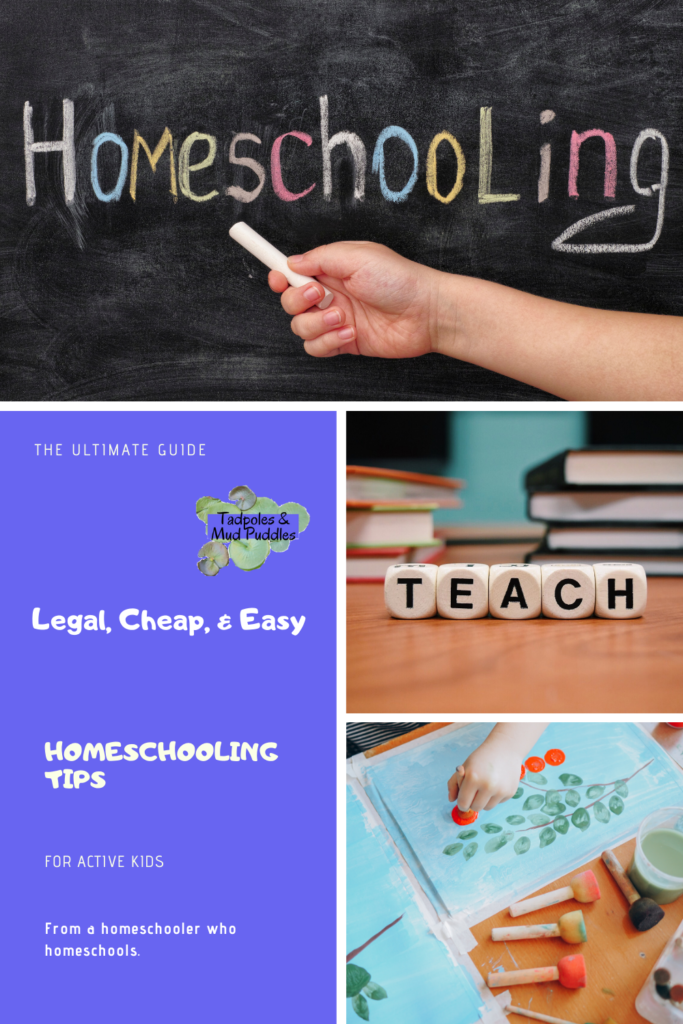
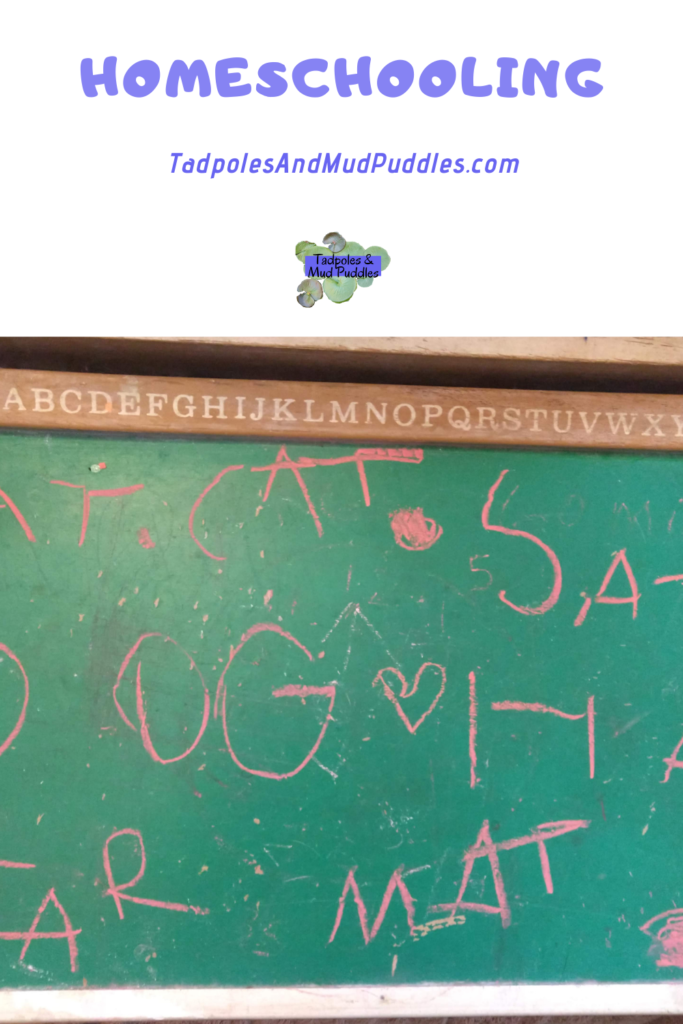
This is brilliant. I needed these. running out of ideas.
I’m so glad we could help.
These are really great tips! I’m not a homeschooler, but my oldest does e-learning for kindergarten. I’ll have to pass this along to my SIL.
Impressive with your comprehensive guidelines. It did help a lot for the homeschooling. Great thanks!
Thank you! I’m so glad this was helpful.
Thanks for all the great info, after having my son home earlier this year due to covid – I’m really considering homeschooling but not sure if it’s right for us or not. He’s so active I worry that school isn’t letting him be him.
That’s one of the main reasons Aiden is being homeschooled. He focuses but in his on time and if he was being asked to lesson for 8 hours a day I’m sure he’d be in trouble a lot and not learning much. He’s smart and active. Think about it for sure. And keep looking around. We love active learning. 🙂
Thanks for much for your tips. I just spent the last year homeschooling my now 9th grader and was considering the same for my now kindergarten age child. However they both begged me to go to regular school and against my better judgement and also due to my husbands pressure I allowed them. Needless to say we are all sick and I will not be returning them.
You’re welcome! I know it really tough this year to make the right decision when it comes to school. I hope you all recover quickly and can get school back on track. We love homeschooling and the flexibility that comes with it. And my husband wasn’t on board with homeschooling either at first.